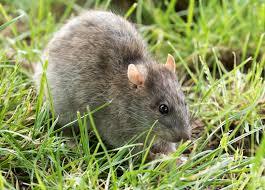According to a new study, a strain of coronavirus that has recently alarmed the swine industry may have the potential to spread to humans as well.
The outbreak of such an illness has the potential to wreak economic havoc in many countries across the globe that rely on the pork industry.
What is swine coronavirus?
Researchers including those from the University of North Carolina (UNC) at Chapel Hill in the US said that this coronavirus strain is also known as swine acute diarrhea syndrome coronavirus (SADS-CoV), emerged from bats and has infected swine herds throughout China.
The findings were published Oct. 12 in PNAS. The virus’ potential threat to people was demonstrated in lab tests showing SADS-CoV efficiently replicated in human airway and intestinal cells.
The scientists found that the virus efficiently replicates in human liver and gut cells, as well as airway cells.
Can humans get swine coronavirus?
While SADS-CoV has not been known to affect humans to-date, the researchers said coronavirus strains found in animals have the potential to infect humans as well — an effect known as spillover.
According to the scientists, a wide range of mammalian cells, including primary human lung and intestinal cells, are susceptible to SADS-CoV infection, with the virus showing a higher rate of growth in intestinal cells found in the human gut, unlike the novel coronavirus which primarily infects lung cells.
However, the researchers’ team suggests that humans have not yet developed Cross-protective herd immunity to SADS-CoV that often prevents humans from contracting many coronaviruses found in animals.
“SADS-CoV is derived from bat coronaviruses called HKU2, which is a heterogeneous group of viruses with a worldwide distribution,” said Caitlin Edwards, another co-author of the study.
“It is impossible to predict if this virus, or a closely related HKU2 bat strain, could emerge and infect human populations,” Edwards said.
However, given the broad host range of SADS-CoV, coupled with its ability to replicate in primary human lung and gut cells, the researchers believe the virus demonstrates “potential risk for future emergence events in human and animal populations.”
What is the treatment for swine coronavirus?
Edwards and her colleagues tested the broad-spectrum antiviral remdesivir as a potential method of treatment for the infection, and the preliminary results showed that it had robust activity against SADS-CoV.
However, the scientists cautioned that more testing is necessary on additional cell types, and in animals to confirm these findings.
“Promising data with remdesivir provides a potential treatment option in the case of a human spillover event,” Edwards said.
“We recommend that both swine workers and the swine population be continually monitored for indications of SADS-CoV infections to prevent outbreaks and massive economic losses,” she added.
While surveillance and early separation of infected piglets provide an opportunity to mitigate larger outbreaks and the potential for spillover into humans, Baric said vaccines may be key for limiting the global spread and human emergence events in the future.











